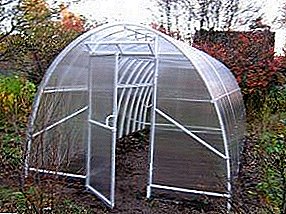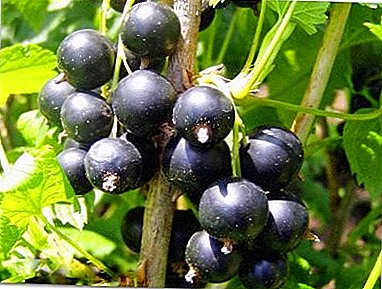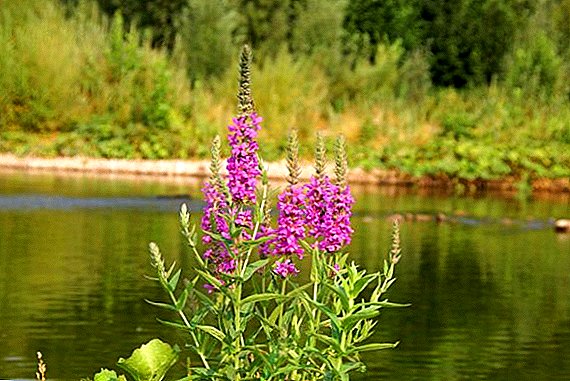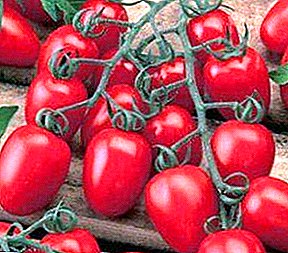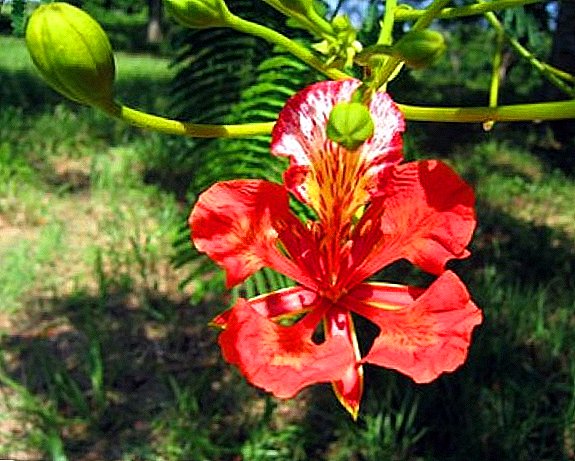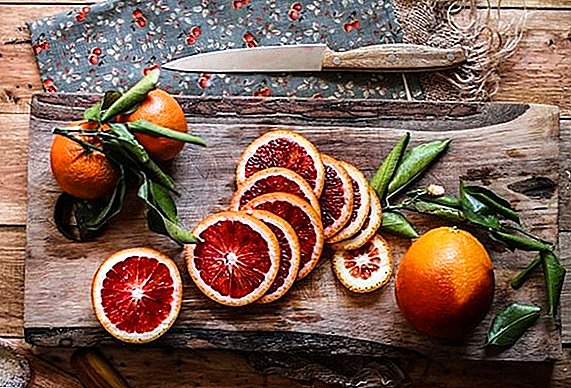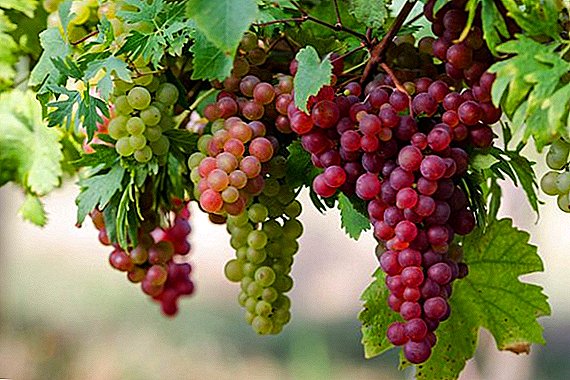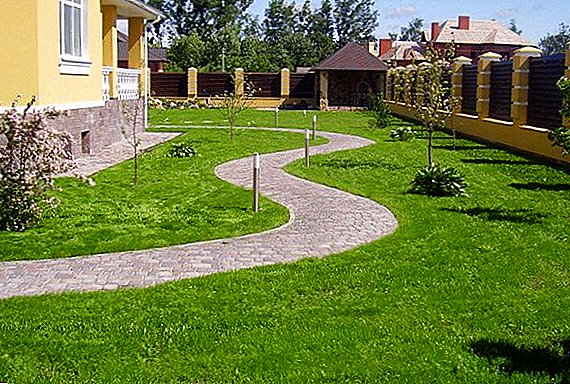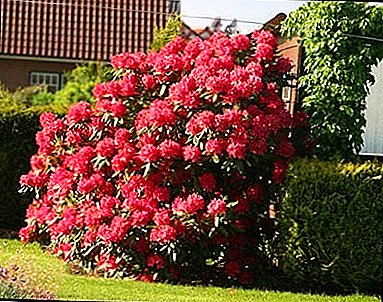
Many varieties rhododendrons (azaleas)grown in parks and gardens during summer flowering are so thickly covered with hats of the most delicate flowers — cream, pink, purple, yellow, orange — that really seem to be curly clouds that sit down for a while on the lawns.
There are quite a few hybrid forms of these plants that develop perfectly in the conditions of the middle band.
Landing
Variety and place selection
 For cultivation in the open field it is advisable to choose winter hardy varieties.
For cultivation in the open field it is advisable to choose winter hardy varieties.
To plant rhododendron, it is better to choose the northern direction of the site, which is illuminated by the sun in the morning and evening hours.
The ideal place should leave the space above the bush open, but in the midday hours a not too thick shadow should fall on it - just like in a rare pine forest.
The closest neighbors of rhododendron-azaleas should be trees with deep root system - pine or larch.
If nearby are deciduous trees, whose roots are located superficially, they will deprive the sapling of moisture and nutrition.
In such cases, the landing pit will need to be insulated with polyethylene or roofing felt.
If the groundwater is a meter from the soil surface and less - for planting you need to select a site higher.
Landing time
The best time for planting in open ground - spring time, from April to mid-May (before flowering begins) and autumn, from September to November. Rhododendrons can be planted in the spring-summer period, excluding flowering time and a two-week period after it.
The soil
The main requirements for the composition of the soil: sufficient friability and nutritional value, acid reaction.
To ensure such characteristics, eight buckets of peat, two buckets of sod land and two buckets of sand are mixed.
How to do it?
Standard dimensions of the landing pit: depth - 40 cm, diameter 60 cm.
 It is placed a drainage layer (pebbles, rubble or brick battle), the prepared soil is poured (it is useful to pour more 30-50 g of complex mineral fertilizers, not containing neither calcium, nor chlorine) and well condense it, and then dig out a landing hole for a sapling. Before planting, its root system is immersed in water and kept there until the release of air bubbles stops.
It is placed a drainage layer (pebbles, rubble or brick battle), the prepared soil is poured (it is useful to pour more 30-50 g of complex mineral fertilizers, not containing neither calcium, nor chlorine) and well condense it, and then dig out a landing hole for a sapling. Before planting, its root system is immersed in water and kept there until the release of air bubbles stops.
Then place the plant, fill the hole with soil mixture, tamping it down and making sure that the root neck is flush with the surface of the earth.
After planting, watering is carried out and sprinkled the soil around the "new home" with pine leaves or peat, oak leaves.
If there are many buds on a bush, some of them should be removed so that the plant will direct the main forces to rooting, and not to flowering.
If necessary, you can provide a single bush support, and then, when the plant is accepted, support removed.
To loosen the soil should not be, because the root system is shallow and thin roots are easily damaged.
Open field maintenance
Preparing for the winter
In November, the root system is warmed, scattering a layer of peat around the pristvolnom circle.
In areas with frosty winters, high shoots of deciduous varieties are bent to the ground and covered with dry foliage and fir spruce leaves.
Young bushes of evergreen varieties cover with spruce branches completely.
Watering and spraying
The plant needs high humidity, so it needs to be watered regularly, with soft water, preferably thawed or rain. You can soften the water for irrigation by placing a few handfuls of peat in it for a day. On hot and dry days, be sure to spray it frequently with soft water. In the autumn, if there is little rain, they carry out additional watering - a bucket of water under each bush.
Top dressing
 General application Fertilizers are held annually or every two years (depending on the state of the plant): a compost bucket and a peat bucket are brought in shallowly around the bush.
General application Fertilizers are held annually or every two years (depending on the state of the plant): a compost bucket and a peat bucket are brought in shallowly around the bush.
In the main phases of development young rhododendrons are supported by the following feedings:
In early June, at the height of flowering: a tablespoon of potassium sulfate and the same amount of urea are dissolved in a bucket of water.
In mid-June, to the end of flowering: a solution of this concentration: a tablespoon of potassium sulfate and the same amount of fertilizer for flowering plants in a bucket of water.
At the end of flowering, at the end of June, a tablespoon of superphosphate and the same amount of potassium sulfate are stirred in a bucket of water.
Growth and pruning
Rhododendrons are pruned, as a rule, only slightly, since their bushes naturally form the correct crown. However, sometimes it is necessary to remove the frozen or weak shoots, rejuvenate the old plant.
If the diameter of the branches is more than 2 cm, the slices are covered with garden pitch.
Severely affected by frost or very old copies are cut to a height of 30-40 cm above the ground in two steps: first one half, and the next year - the rest.
Pruning is carried out in early spring and always wearing gloves: rhododendron leaves are poisonous!
To prolong flowering and optimize growth, the flowering inflorescences should be broken out.
Bloom
The color of funnel-bell-shaped flowers, their shape, size, terry, size of inflorescences, thanks to the success of selection, are incredibly diverse. No, perhaps, only azaleas-rhododendrons with a pure blue color of flowers. The flowering of many varieties is accompanied by a pronounced pleasant aroma.
 Most rhododendrons have an average flowering time of 2-3 weeks per fall. The end of May is the middle of July.
Most rhododendrons have an average flowering time of 2-3 weeks per fall. The end of May is the middle of July.
There are varieties with earlier (in April) and later (in June) flowering, as well as repeated (not every year) flowering in autumn.
Poor flowering or lack thereof may be caused by adverse conditions: improper soil composition, excessive light, poor nutrition. In addition, with the excessive application of nitrogen fertilizers, the plant, to the detriment of flowering, strongly develops leafy cover.
Growing garden shrubs
The plant can be propagated by laborious seed, as well as vegetatively - cuttings and layering.
Seed propagation
Sowing substrate consists of peat and sand in equal quantities. In the spring, small rhododendron seeds are scattered over its moist surface and covered with plastic wrap. Greenhouse contain at 20 degrees, air and moisturize the substrate. The time of emergence of seedlings, as a rule, is 3-4 weeks.
When the first true leaves grow, seedlings are planted more freely, deepening them at the same time to the cotyledonsto stimulate the development of the root system.
After that, young plants contain at a temperature of from 8 to 12 degrees and a light bottom from 16 to 18 hours, which is created by half-brightness. Watered through the pan.
By June, the seedlings are seated less often and grown again.
Winter temperatures should not rise above 18 degrees. In the spring, small rhododendrons are seated a distance of 3-4 cm one from the other, but only for the third year will they be ready for landing in the ground.
Cuttings
 For this method of propagation, semi-woody shoots are used, from which 5-8 centimeters cuttings are cut. The lower sections are placed in a solution of growth stimulator for 12-16 hours. Then they are planted in a container with a light soil mixture and covered with plastic wrap.
For this method of propagation, semi-woody shoots are used, from which 5-8 centimeters cuttings are cut. The lower sections are placed in a solution of growth stimulator for 12-16 hours. Then they are planted in a container with a light soil mixture and covered with plastic wrap.
Air out, maintain moisture. Rooting takes a long time (up to 3 months) and is not always successful. Growing rooted cuttings in a mixture of peat and pine needles; they overwinter indoors, at a temperature of about 10 degrees. In the spring they are added to the ground in the landing boxes, and finally planted at least a year later.
Layering
In the spring, the selected young branch is bent to the ground, fixed, added dropwise and watered, avoiding stagnant moisture. When new resistant shoots appear, the layers are finally separated.
Diseases and pests
In a favorable environment, the disease does not affect the plant.
 Fungal spotting - a consequence of growing in packed wet soil. To eliminate it, optimize the ingress of moisture and carry out the treatment with copper sulphate or bordeaux liquid.
Fungal spotting - a consequence of growing in packed wet soil. To eliminate it, optimize the ingress of moisture and carry out the treatment with copper sulphate or bordeaux liquid.
If there is not enough nitrogen and potassium, when moisture stagnates, mixed chlorosis - leaves turn yellow with spots. In this case, eliminate excessive moisture, provide drainage and spray the plant with ferrous sulfate solution: 7.5 g per liter of water.
Red spots along the veins on the leaves appear with a lack of soil nutrition. Fertilization with ammonium fertilizers or potassium nitrate will correct the situation.
After a strong frost on the unopened plant leaves die offtherefore, it is not advisable to remove the winter shelter from foliage or spruce branches too early.
In the open ground on rhododendron can settle such insect pests: rhododendron bug, spider mite, Asian garden spike. Control measures - spraying diazinon.

Mealybug. From it relieves spraying karbofosom.
Furrowed weevil. Against it helps karbofos, as well as basudin, diazinon and furadan.
Narrow-winged mole-miner. In this case the bushes are fumigated with sulfur.
In addition, garden azaleas can eat slugs and snails. Such "guests" are simply collected, and as a prophylaxis, bushes are treated with a fungicide.
Caring for "pink trees" (this is translated from the Greek word "rhododendron"), maintaining the desired acidity and moisture of the soil, while feeding these perennial plants in time, you can admire every summer their abundant flowering, which over the years becomes more magnificent - like in famous gardens Leonardsley.
A photo
See more photos of rhododendron in the garden:






